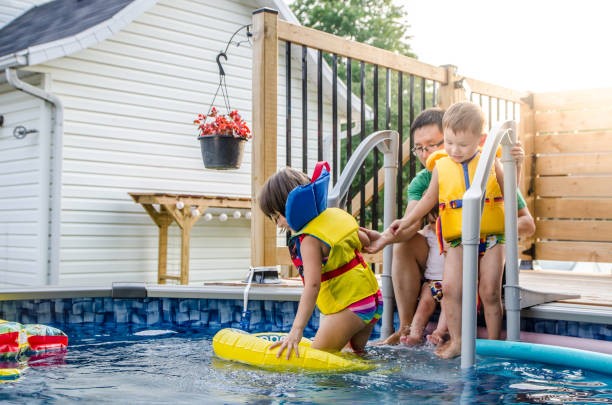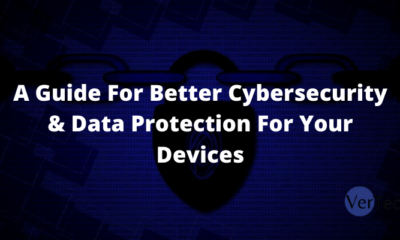Blog
Safe Swimming Starts Here: The Role of Pool Certification and Inspection in Victoria, Australia

In Victoria, Australia, the importance of pool certification and inspection cannot be overstated when it comes to ensuring safe swimming environments. With its picturesque beaches, thriving aquatic culture, and a climate that beckons people to take a refreshing dip, swimming plays an integral role in the lives of Victorians. However, the enjoyment and well-being of swimmers depend heavily on the adherence to stringent safety standards and regulations. This is where pool certification and inspection step in, acting as crucial safeguards to guarantee the safety of individuals engaging in water-related activities.
By evaluating the construction, maintenance, and operation of pools, these processes play a vital role in preventing accidents, promoting water safety education, and instilling confidence in the community. This introduction explores the significance of pool certification and inspection in Victoria, underscoring their indispensable contribution to fostering safe swimming experiences for all.
What Does Pool Certification Cover?
Swimming pools are popular recreational spaces that provide enjoyment and relaxation for individuals and families alike. However, the safety of swimmers should always be a top priority. In order to ensure the well-being of pool users, pool certification plays a crucial role. This comprehensive process involves a thorough evaluation of various aspects of a swimming pool, including its construction, equipment, maintenance, and adherence to safety standards. Here are some of the things that pool inspectors look at to guarantee a safe and secure swimming environment.
1. Structural Integrity
One of the primary aspects examined during pool certification is the structural integrity of the pool. Certified inspectors thoroughly assess the construction materials, design, and overall stability of the pool. They inspect the pool’s walls, floors, and supporting structures to ensure they meet the required standards and can withstand the forces exerted by water and usage over time. This evaluation helps identify any potential weaknesses or vulnerabilities that may compromise the safety of swimmers.
2. Safety Barriers and Enclosures
Pool certification also encompasses the evaluation of safety barriers and enclosures surrounding the pool area. These barriers are designed to prevent unauthorised access, particularly by children, and reduce the risk of accidents. Inspectors check the height, strength, and condition of pool fences, gates, and latches. They also ensure that the barriers are correctly positioned and free from any climbing aids that could facilitate unauthorised entry.
3. Water Circulation and Filtration Systems
Maintaining proper water circulation and filtration is essential for ensuring clean and hygienic swimming conditions. Pool certification requires a detailed assessment of the pool’s circulation and filtration systems. Inspectors examine the pumps, filters, and chemical treatment systems to ensure they are functioning effectively. They also verify the presence of appropriate safety measures, such as anti-entrapment devices, to prevent incidents related to suction and drainage.
4. Chemical Balance and Water Quality
The chemical balance and water quality of a swimming pool directly impact the health and comfort of swimmers. During the certification process, inspectors carefully evaluate the water parameters, such as pH levels, chlorine or alternative sanitizers, and alkalinity, to ensure they meet the recommended standards. They also verify that proper testing and documentation procedures are in place to regularly monitor and maintain water quality.
5. Safety Equipment and Signage
Certification inspections cover the presence and condition of essential safety equipment and signage. Inspectors ensure that life-saving equipment, such as life rings, reaching poles, and first aid kits, are readily available and properly maintained. Additionally, they check the visibility and accuracy of safety signs, including warnings, depth markers, and emergency contact information, to promote awareness and response in case of an emergency.
6. Compliance with Local Regulations
Pool certification is not limited to evaluating physical aspects; it also includes compliance with local regulations and bylaws. Inspectors ensure that the pool meets all legal requirements, including permits, fencing regulations, signage obligations, and any other applicable rules set by local authorities. This aspect of certification guarantees that the pool owner has fulfilled their responsibilities as stipulated by the law, enhancing overall safety and accountability.
What Happens After Pool Certification and Inspection in Victoria?
After pool certification and inspection in Victoria, Australia, several important steps typically follow to ensure ongoing compliance and maintain a safe swimming environment. Let’s explore what happens after the certification and inspection process:
1. Issuance of Certification
Upon successful completion of the pool certification and inspection, a certificate of compliance or a pool safety certificate is issued to the pool owner. This document serves as proof that the pool has met the required safety standards and complies with relevant regulations. The certificate typically includes information about the pool, its compliance status, and the date of inspection.
2. Compliance Period
In Victoria, pools are generally subject to a compliance period, which is the timeframe within which the pool must maintain its certified status. The length of this period may vary depending on the type of pool and local regulations. During this time, the pool owner is responsible for ensuring ongoing adherence to safety standards and regular maintenance to uphold the certified status.
3. Periodic Reinspections
To ensure ongoing compliance and safety, periodic reinspections are conducted after the initial certification. These follow-up inspections aim to verify that the pool continues to meet the required standards. The frequency of these reinspections may depend on factors such as the pool type, usage, and local regulations. Pool owners are usually notified in advance about the upcoming reinspections to allow for necessary preparations.
4. Rectification of Non-compliance
If any non-compliance issues are identified during the certification or subsequent reinspections, the pool owner is required to rectify them within a specified timeframe. Non-compliance issues could include deficiencies in structural integrity, safety barriers, equipment malfunction, or water quality concerns. Pool owners are responsible for addressing these issues promptly and ensuring that the necessary repairs or improvements are made to bring the pool back into compliance.
5. Public Database and Compliance Register
In Victoria, pool certification and inspection details are often recorded in a public database or compliance register. This database serves as a valuable resource for the public, prospective pool users, and relevant authorities to verify the compliance status of a particular pool. It allows individuals to make informed decisions regarding pool safety and assists regulatory bodies in monitoring and enforcing compliance.
6. Ongoing Maintenance and Safety
Pool owners have a responsibility to maintain their pools in a safe and compliant condition beyond the certification and inspection process. This includes regular maintenance of equipment, monitoring water quality, and ensuring the integrity of safety barriers. It is essential for pool owners to stay updated with relevant safety guidelines, industry best practices, and any regulatory changes to uphold a safe swimming environment.
Conclusion
Pool certification covers a wide range of essential aspects related to swimming pool safety. From structural integrity to water quality, safety barriers to compliance with regulations, each component plays a vital role in ensuring a secure swimming environment. By undergoing thorough inspections and meeting the necessary standards, certified pools provide reassurance to swimmers and promote the overall well-being of pool users. Whether in residential, commercial, or public settings, pool certification serves as a crucial step towards creating a safe and enjoyable experience for everyone.
-
Blog1 year ago
MyCSULB: Login to CSULB Student and Employee Portal – MyCSULB 2023
-
Android App3 years ago
Cqatest App What is It
-
Android1 year ago
What Is content://com.android.browser.home/ All About in 2023? Set Up content com android browser home
-
Software2 years ago
A Guide For Better Cybersecurity & Data Protection For Your Devices
-
Latest News2 years ago
Soap2day Similar Sites And Alternatives To Watch Free Movies
-
Android2 years ago
What is OMACP And How To Remove It? Easy Guide OMACP 2022
-
Android3 years ago
What is org.codeaurora.snapcam?
-
Business2 years ago
Know Your Business (KYB) Process – Critical Component For Partnerships





















